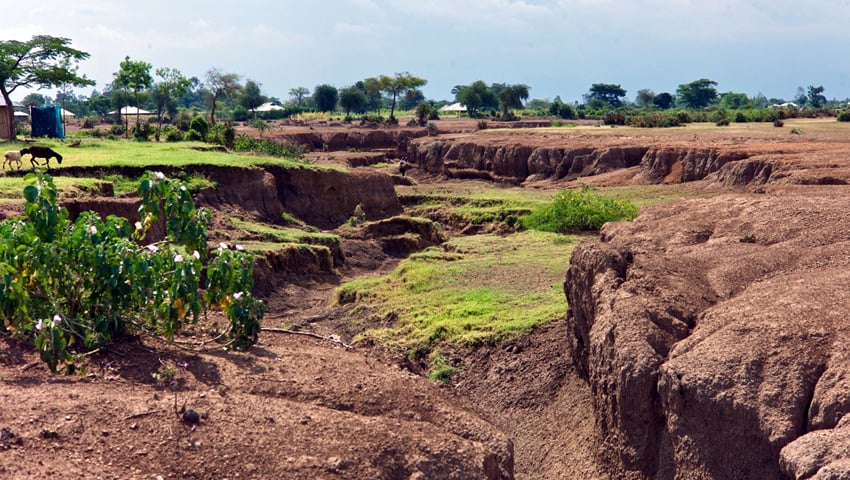Global grasslands are a source of biodiversity and provide a host of benefits to humans, including food production, water supply, and carbon storage. But their future looks bleak without action to halt their degradation and promote their restoration, according to the authors of a paper published in the journal Nature Reviews Earth & Environment.
A team of international experts, led by The University of Manchester, has proposed a series of strategies to halt the degradation of grasslands globally and promote their restoration to meet sustainable development goals.
The study highlights how the world’s grasslands – which cover about 40% of the Earth’s land surface and some 69% of the world’s agricultural land area – are under severe threat from on-going degradation. Yet grasslands are largely ignored in sustainable development agendas. The authors spell out how this poses a major threat to hundreds of millions of people around the world who rely on grasslands for food, fuel, fibre, medicinal products, as well as their multiple cultural values.
The team, which includes experts from major grassland regions of the world, propose a set of strategies to combat grassland degradation and promote restoration. These strategies include increasing recognition of grasslands in global policy, developing standardised indicators of degradation, using scientific innovation for effective restoration at regional and landscape scales, and enhancing knowledge transfer and data sharing on restoration experiences. They argue that implementing these strategies is even more urgent because of ongoing climate change, which is exacerbating the problem.
Lead author Professor Richard Bardgett of The University of Manchester, said, “Grassland degradation represents a major global challenge that must be addressed if we are to achieve key targets of biodiversity agendas, such as the Aichi Biodiversity Targets of the Convention on Biological Diversity (CBD), and the United Nations Sustainable Development Goals (SDGs), including restoration and sustainable use of terrestrial ecosystems, hunger and poverty alleviation, and climate change mitigation.”
Halting and reversing land degradation is one of the biggest challenges to meeting the targets set by the UN Sustainable Development Goals. “Combating degradation is a central to the UN Decade on Ecosystem Restoration (2021-2030),” said Bardgett. “Put simply, if grasslands are to be managed sustainably, then both global and regional policy must be revised to recognise the value of grasslands for multiple ecosystem services and establish targets for their protection, restoration and sustainable management.”
The authors propose a standardised approach for assessing grassland degradation and restoration based on shared understanding among stakeholders of potential trade-offs in ecosystem services in degraded and restored grasslands. They illustrate how their approach can be used in different situations, including agricultural grasslands in Europe and natural grasslands in arid and semi-arid regions of Eastern Africa, to identify restoration options that best deliver the needs of different stakeholder groups, including farmers or pastoralists, conservationists and tourists.
Dr Urs Schaffner of the Centre for Agriculture and Bioscience International (CABI Switzerland), who specialises in solutions to woody plant invasion in grasslands in East Africa, said, “Whilst we demonstrate how our standardised approach can be applied using specific case studies, future research is needed to test this approach in different contexts and at local and larger scales.
“Research is also needed to better understand different societal perceptions of grasslands and the reasons why they have been neglected in sustainability policy, to develop and test promising new ways of assessing grassland degradation and restoration, and to harness ecological knowledge for restoration success.”
Professor James Bullock of the UK Centre for Ecology & Hydrology said, “In the UK and much of western Europe, much of our grassland is intensively farmed for livestock [set-stocking]. This intensive grassland provides little in the way of environmental benefits. Our few remaining species-rich grasslands support many rare animals and plants, as well as sequestering carbon and holding flood waters, but they are under threat from building schemes, intensive agriculture, pollution and even inappropriate tree-planting.”
As highlighted by Dr Giselda Durigan, one of the co-authors from Brazil, whose work seeks to improve the management, conservation and restoration of the Cerrado grasslands, “the study also demonstrates some trade-offs between ecosystem services, exemplified by the high risk posed by misguided tree planting in natural grasslands to sequester carbon at the expense of water provisioning and biodiversity.”
The authors argue that giving due attention to grassland and the benefits they provide in sustainability policy should be ‘on a par’ with forests. They hope that their paper recommendations with help with grasslands getting fairer treatment at the upcoming COP15 conference of the Convention on Biodiversity, and guide future research and policy needs for halting grassland degradation and achieving restoration success.
Professor Bardgett said, “We hope that our study raises awareness of the plight of global grasslands and the need for urgent action to halt grassland degradation and enhance restoration success, thereby conserving the many benefits that grasslands provide.”
